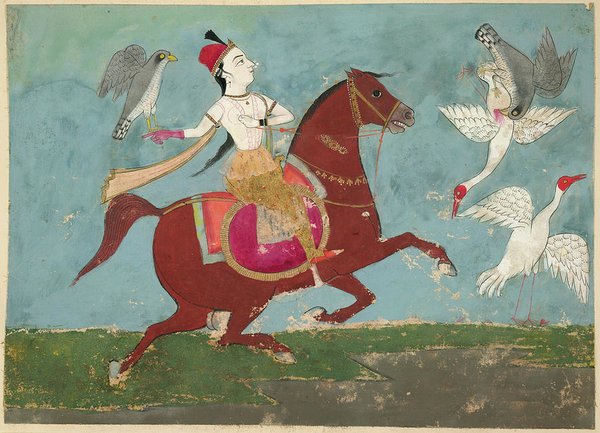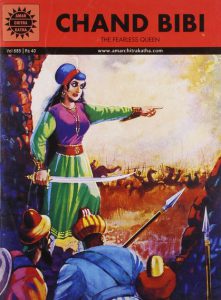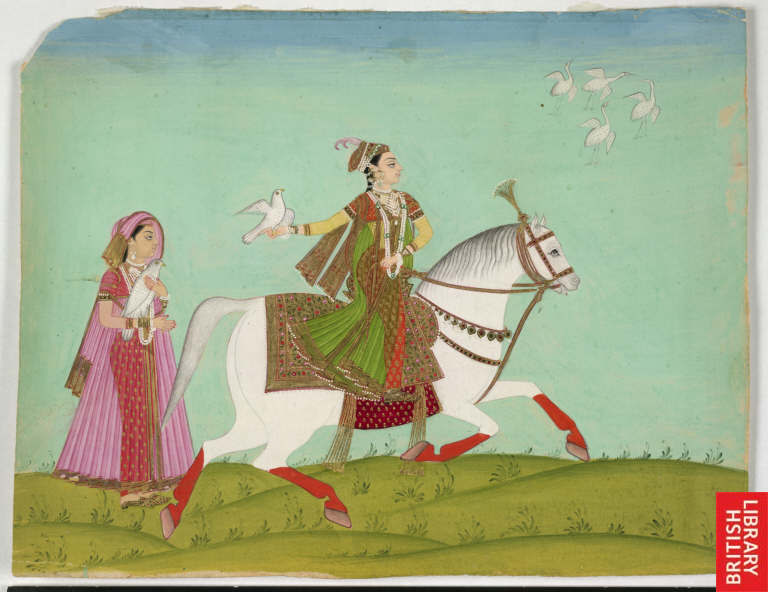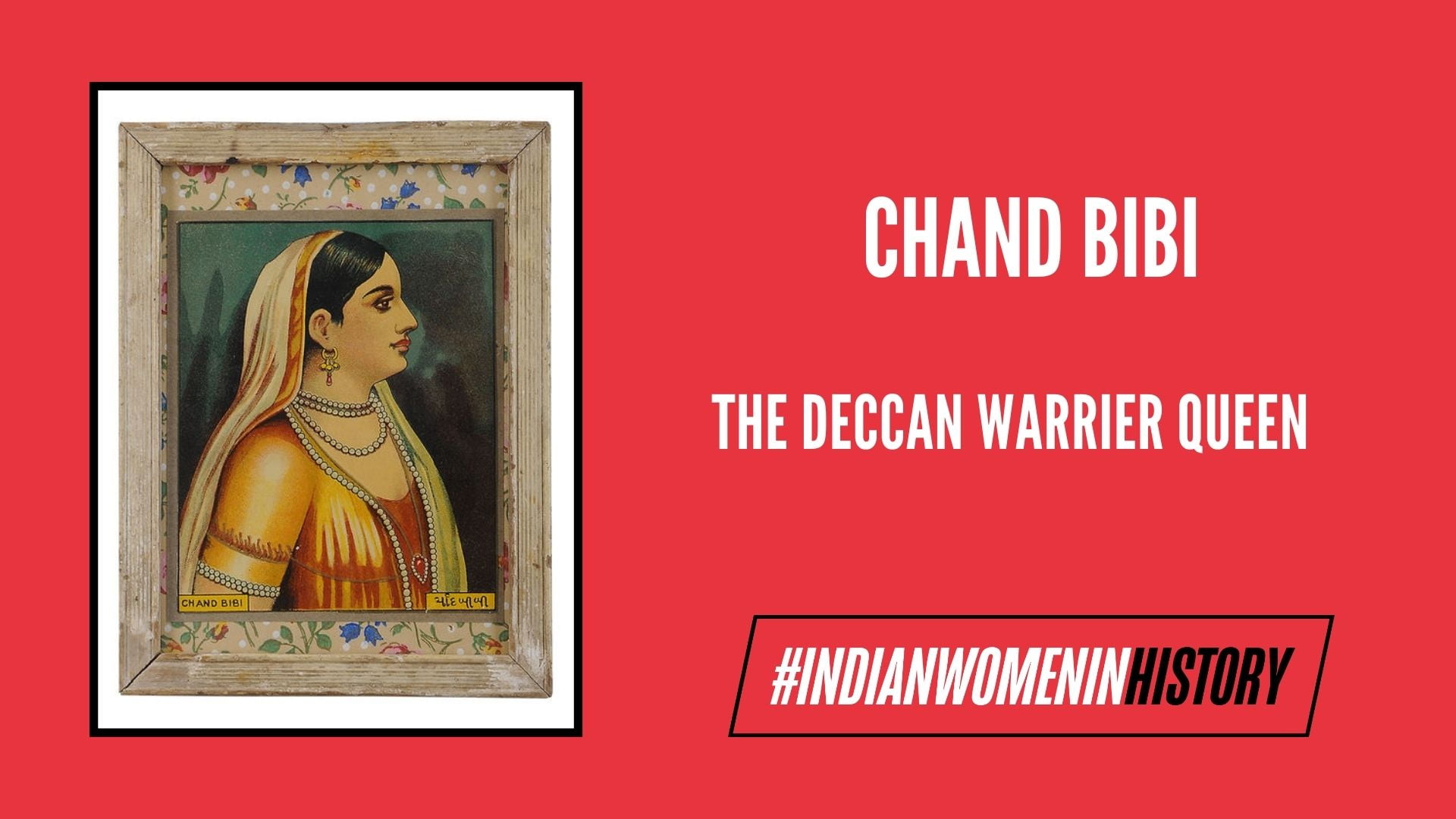Though there are very few female rulers popular culture and media have adopted, the story of Chand Bibi, regent to two of the most powerful Deccan sultanates has been reduced to the 100 word plaque outside her tomb. The Deccan queen not only managed to rule the two states despite the constantly mutinying generals, she also pioneered a Deccan confederation and defended them against the Mughal army twice.

Early Life
Chand Bibi was born in 1550 to Sultan Hussain Nizam Shah and Sultana Khanzada Humayun of Ahmadnagar in present day Maharashtra. As a child she was very interested in the arts and learnt to play the Sitar and was also highly trained in painting. She was interested in sporting activities such as hawking, which was usually reserved for princes and sultans, not women. Beyond all this, it was her strategical thinking and military acumen which allowed her to flourish and become Chand Sultana.
In her early teens she was married to Sultan Ali Adil Shah of Bijapur as a military alliance between the two states against the kingdom of Vijaynagar.
Regency of Bijapur
In her time as the Sultana of Bijapur, she had set herself apart by accompanying her husband in his military endeavours and involving herself in the regular management of the state. So when Sultan Adil Shah died in battle leaving his 9 year old nephew king, Chand Bibi ruled as regent.

Within the few years until the young king, Ibrahim Adil Shah II attained majority, she thwarted three attempts at usurping the throne. Firstly her trusted minister Kamal Khan attempted to remove her from her position. Chand dealt with this by allying with another noble, Haji Kishwa Khan. However, in a few years he too grew hungry for power and brewed rebellion among the nobles. Eventually he imprisoned her and the young Sultan in the Satara fortress and declared himself Sultan.
However, he could not consolidate his position within the nobles, who conspired with Chand to overthrow him. The leader of the conspiring generals, a Habshi minister Ikhlas Khan was then appointed regent by Chand, who kept him as a close ally. However, within a few months instability grew again as Ikhlas Khan declared dictatorship. Sensing weakness neighbouring states of Ahmadnagar and Golkonda attacked. Ikhlas Khan couldn’t fend off this joint attack and returned the leadership to Chand. With her knack for creating alliances and military strategy, she called on the Maratha forces to cut of the enemy’s supply lines, forcing the Ahmadabad-Golkonda force to retreat.
In 1582, Chand Bibi’s brother, Sultan of Ahmadnagar married Khadija Sultana of Bijapur. Appointing general Dilavar Khan the regent, Chand returned to her homeland.
Regency of Ahmadnagar
Once again, within a short period of her arrival, Chand’s brother was killed in a battle with the Mughal Prince Murad. This left his infant son as heir with Chand as his regent. However, rebelling noble Mian Manju put 12 year old Ahmed Shah on the throne. To contend the great disapproval and conspiracies of the generals he called Prince Murad’s army to Ahmadnagar. Soon Mian Manju realised his mistake however it was too late to uninvite the Mughals. He gave up power to Chand Bibi.

When the Mughals arrived they were faced with a prepared and united army. Prince Murad’s strategy to take over the fort was to build five mines around it. It is said that to encourage her troops who were suffering from famine, and to safe guard her homeland, Chand Bibi herself with her generals dug out two of the five mines before they could explode. She also in an unprecedented moment ran out of the palace with a sword and armour worn with a veil to lead her troops against the Mughals. She devised a strategy which allowed them to continuously attack the Mughals exhausting them of their supplies. Prince Murad, worried of rebellion among his forces decided to negotiate, taking a small district in return for peace.
In this period of peace, Chand Bibi reached out to the other Deccan Sultanates, as her father had done to form a confederate against the Mughals. So the next time Prince Murad attempted to secretly annex outskirt towns of Ahmadnagar he was met with the joint force of all Deccan states. Though Prince Murad won this battle, he was called back by Akbar before he entered the city.
Now christened Sultana Bibi, the Deccan confederate became such a strong force that the next attempt of invasion was lead by Emperor Akbar himself. This proved fatal as it was during a time of great internal instability in the region, with several generals and factions fighting attempting to over throw Chand. The Sultana was unsure of her ability to fight the Mughals at a time like that and opted to negotiate. However, when word spread that Chand Sultana was not preparing for battle but was about to concede, the military and the nobles conspired to overthrow her and marched into her apartments and murdered her.
In a few months after her death the sultanates were captured and integrated into the Mughal empire.

Legacy of Chand Bibi
More often than not, the legacy of women is said to lie in the greatness of her offsprings. But in the case of Chand Sultana, it lay in the unity of the Deccan sultanates, which today has formed the state of Maharashtra. Though almost erased from history, paintings of her hawking sit at at the Metropolitan Museum of Arts.
Also read: Rani Avantibai: Remembering The Warrior Queen From Ramgarh | #IndianWomenInHistory
References
About the author(s)
Leah is pursuing a bachelors degree in social science. She feels very strongly against the binary perception of gender and sexuality as well as the oppression stemming from the economic class systems.





Able to find good information from your blog articles.Great job! Keep it up! If any one looking forward to buy historical paintings just visit IndianArtZone from where you get a huge range of famous paintings from Indian Artists.